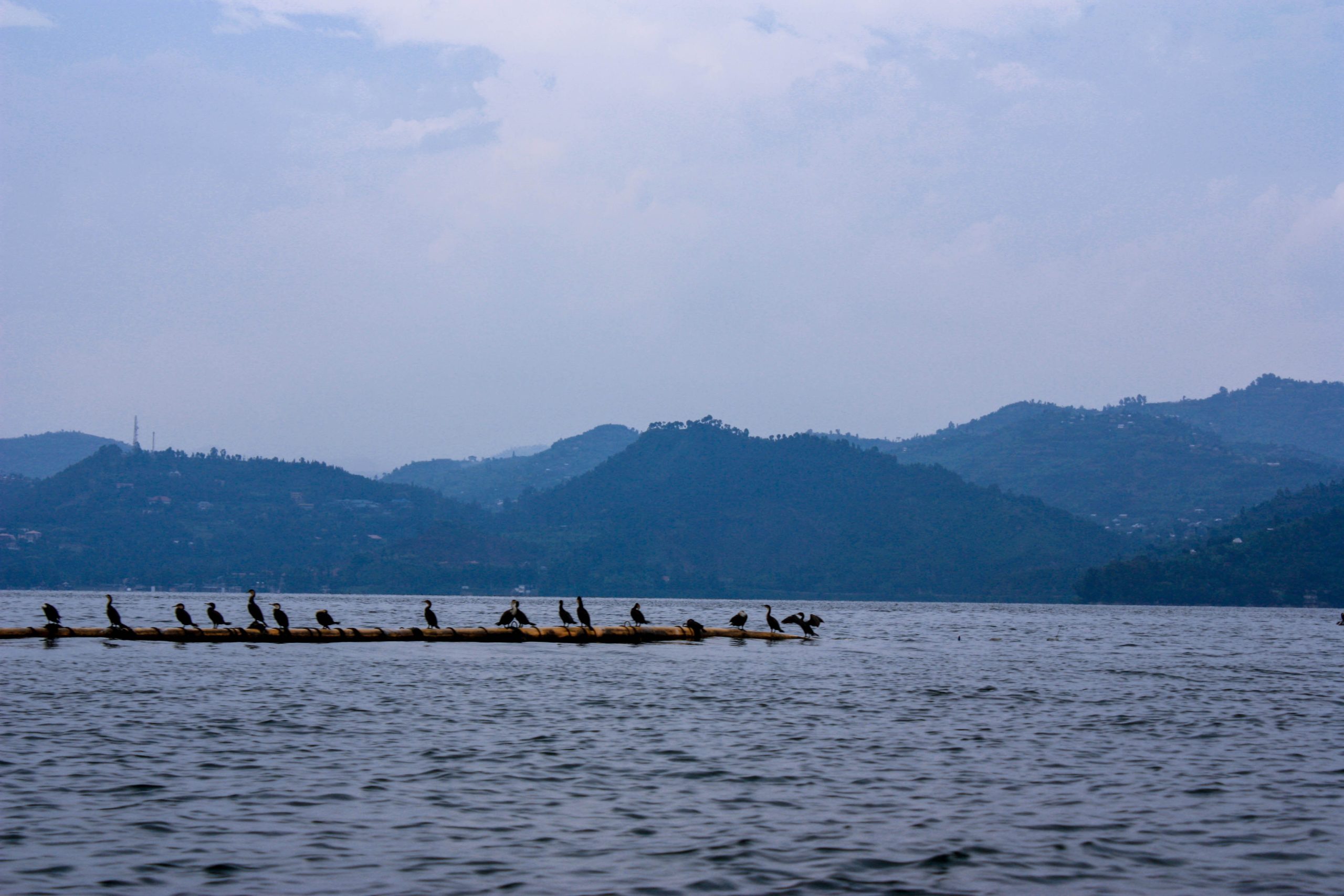Lake Kivu is one of the African Great Lakes, located on the border between the Democratic Republic of the Congo (DRC) and Rwanda. Its claim to fame is not pristine waters, rare fish, or an elegant shoreline. Instead, Lake Kivu, along with Lake Nyos and Lake Monoun, share the deadly habit of sporadically belching massive gas clouds of carbon dioxide.
These limnic eruptions, a rare type of natural disaster where dissolved carbon dioxide will suddenly and violently erupt from deep lakes, form lethal gas clouds that suffocate wildlife, livestock, and humans. The danger lies in the carbon dioxide, hydrogen sulfite, and methane that reside and accumulate in the depths of Lake Kivu. When the lake becomes oversaturated with gases, an eruption is imminent.
Putting the Threat of Limnic Eruptions into Context
Lake Nyos’s limnic eruptions in 1986 released over 80 million cubic meters of carbon dioxide, which killed around 1,700 people and 3,000 livestock by asphyxiation. Today, if mismanaged, Lake Kivu has the potential of a limnic eruption that dwarfs the one in Lake Nyos by comparison. This would initiate a blast that could kill millions of citizens in one day through a toxic cloud release containing 2000 ppm hydrogen sulfide.
The impact would be catastrophic, requiring an unprecedented disaster recovery effort just to bury the dead once safe to enter the zone. Recovery from this event could take years. It would destroy the nearby ecosystem, killing all fish and animals, exacerbating food and water insecurity. The lake water would no longer be potable after a turnover, as it becomes eutrophic. The limnic eruption would also emit 2 gigatons of carbon into the atmosphere that day – the approximate equivalent of one-third of the total annual emissions from the United States in a given year.
Why Previous Projects on Lake Kivu Fail to Avert Potential Catastrophe
Decades ago, scientists discovered that these types of outgassing events were occurring every thousand years or so when gas concentrations became so large that they triggered limnic eruptions. They realized that safely releasing the gases from the lake before too much accumulated was key to preventing another catastrophic blowout. This has proven to be a challenge to successfully implement.
From 1965 until 2003, extraction of the gas was small-scale. The extracted gas was used to run boilers at the Bralirwa brewery owned by Heineken near Gisenyi. More recently, in 2015, Rwandan KivuWatt, owned by ContourGlobal, began operation of their 26 MW facility that took seven years to build. Still in construction is Symbion Power Lake Kivu Limited (later purchased by Shema) who developed a design with the same technology to extract methane for power generation.
However, the Rwanda Environmental Management Authority (REMA) did not accept the Symbion Feasibility Study nor their ESIA and refused to issue a permit for them to build a full-scale plant on Lake Kivu. So, for now Shema is only allowed to build a demonstration-scale project to test the impact on the lake.
Rwanda and Congo formed a joint working group called Expert Working Group on Lake Kivu Gas Extraction. In 2009, they published the project evaluation document called Management Prescriptions (MPs) for Lake Kivu Development. This document is legally recognized in both countries.
According to a 2020 peer-reviewed paper by Hirslund and Morkel, of the 14 requirements listed by the document, both Shema and KivuWatt fail to comply with most of them. The peer-reviewed paper set out these non-compliances of KivuWatt’s design. Shema’s demo facility is still under construction, so commissioning and testing still need to be completed. However, the MPs are not guaranteed to remain as robust, especially against lobbying from operators to bend the safety rules. As the facility was designed by the same engineering company as KivuWatt’s, there’s been little material change to improve compliance with the MPs.
Their key non-compliance is not returning the degassed water to the required depth at which it must re-stratify with equal density, below the main gradient. Both operations release degassed water too shallow for their density, and the resultant dense plume descends through the main gradient at a 260-meter depth. This destabilizes the gradient layer, weakening the most important feature governing the lake’s stability and its defense against a limnic eruption.
Can Anything Promising Be Done About This Threat?
Lake Kivu has the potential to create an extinction zone and potentially start new conflicts due to competition for resources. These potential humanitarian impacts could surpass the Rwandan genocide in numerical and speed comparisons. Another limnic eruption would consume a massive proportion of our carbon budget with a spike that dwarfs all other daily, global emissions.
In order to avoid a natural disaster – gas must be consistently siphoned out of Lake Kivu. Right now, it’s imperative that outgassing plants optimize their designs and comply with regulations.
About The Author

Stanley is currently evaluating his next steps as an individual contributor adapting and mitigating climate change. He has diverse background in technology and business. Most recently helped COSMIC Medical (cosmicmedical.ca) get off the ground by connecting with other like-minded altruists to solve complex problems related to access to medical treatments. He has also co-organized online events with MDG Boston. Stanley holds a BS in Electrical Engineering from University of British Columbia.

